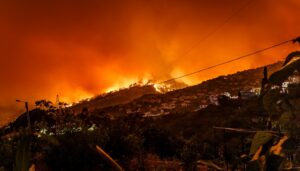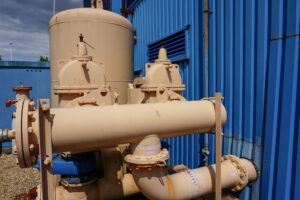A process designed to prevent direct venting of methane into the atmosphere produces particulate matter, and therefore poses significant risk to health and a threat to life.
New research conducted by a team at Rice University’s George R. Brown School of Engineering shows a direct link between air pollution, health, and gas flaring – the combustion of materials produced in the process of gas and oil extraction, including methane, when infrastructure required to bring the material to markets is unavailable.
Findings published in the journal Atmosphere point to spikes in air pollution, and specifically black carbon, when gas flaring is in operation. Partnering with a team from the Clean Air Task Force, calculations were produced based on infrared satellite observations of oil fields accounting for 97% of US flaring, primarily located in North Dakota and Texas. The study found that in 2019, around 16,000 tons of black carbon – or particulate matter known to cause lung damage, respiratory and heart diseases, and strokes – was emitted by these sites, causing between 26 and 53 premature deaths.
‘Our research shows that flaring not only wastes a valuable fuel but is deadly, too,’ said Daniel Cohan, an associate professor of civil and environmental engineering, who led the study with first-year graduate student Chen Chen. ‘Particulate matter causes more deaths than all other air pollutants combined, and flares are an important source of it.’
While particulate matter is produced whenever a fossil fuel is burnt, there are variations between how much is created, with heat a key factor taken into account by the study. ‘For this study, we used 10 different emission factors for flares, and using the reduced-form models made the calculations super-fast,’ added Chen. ‘Other studies show a good relationship between full and reduced-form models, so we’re confident in our results.
‘We initially didn’t think about publishing a peer-reviewed paper,’ they continued. ‘We were asked by the Clean Air Task Force to estimate these health impacts to support their advocacy to reduce harmful pollution from oil and gas production. But because the [work] clearly shows dozens of deaths per year due to flaring, we thought a paper would provide regulators with new angles to consider in their efforts to minimize the impacts of oil and gas air pollution.’
In related news, new FlareIntel technology promises to improve transparency over flaring practices, with the intention of reducing emissions.
Image credit: Kay Mayer

















.Most flare sites in the UK say they emit NOX but NOX mixed with other chemicals in the ambient air changes to PM2.5